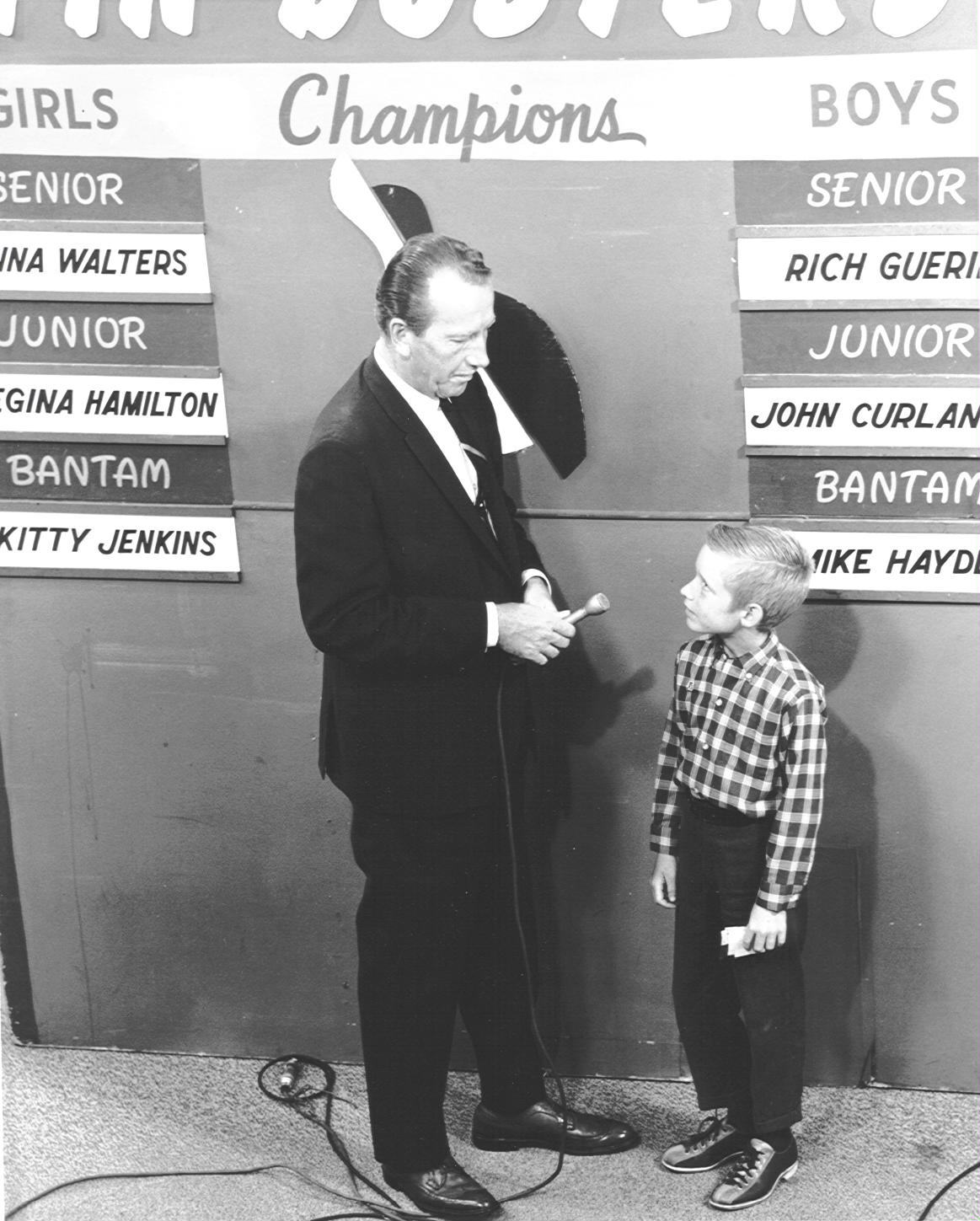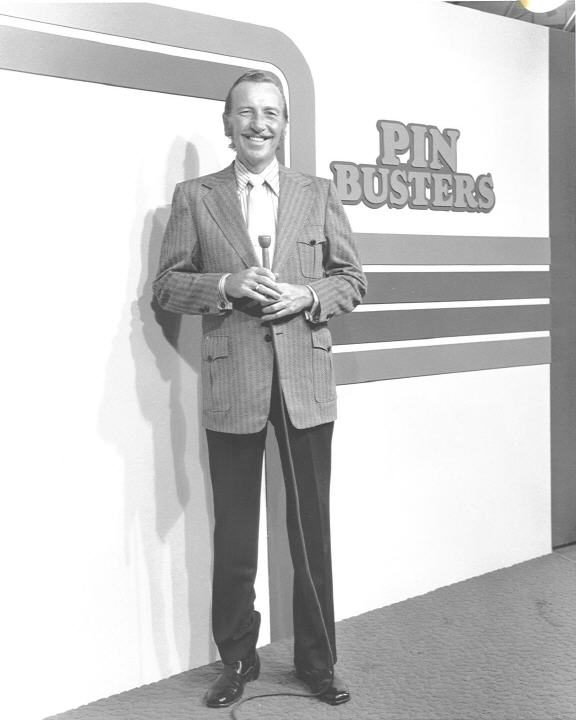 |
| Pinbusters Bert Claster Productions created an instant hit when they introduced "Pinbusters," although no one interviewed for this site can remember exactly when that was. As the birthplace of duckpin bowling, few if any Baltimoreans had not been exposed to the sport. "Strikes & Spares," hosted by the legendary Bailey Goss, was already on the air at WBAL, but "Pinbusters" would be different, and the premise couldn't be simpler. Instead of adults bowling for money as it was on "S&S," "Pinbusters" contestants would be youngsters competing for trophies which increased in size with each win, all donated by Larry Beck, "The Trophy King." Claster advertising salesman John Bowman, whose earlier show "Teen Canteen" was Baltimore's first TV dance program, served as host, this time asking young bowlers about their favorite food, where they bowled, their high game, and where their dad worked. Six four-frame games took place during the weekly one-hour broadcast, with contestants segregated by gender and age (bantam, junior and senior level boys and girls). Should a contestant win six weeks in a row, they were retired as an "undefeated champion," taking home a HUGE trophy, by kid's standards anyway. John Courtland Bowman, Jr. was a tall, mustachioed man, always encouraging gutterballers to "take your time, son." His own son, John Bowman, III, describes his father as "a charmer." Born in Harford County, MD, February 28, 1919, Bowman, according to his son, "genuinely liked children--other people's." He'd worked in the safety departments of a couple of local trucking firms before going to work for Claster. Gregarious by nature, Bowman could also be creative, coming up with some interesting names for the splits encountered by bowlers on "Pinbusters." The five, seven and ten combination was dubbed "Faith, Hope and Charity" by Bowman, while the seven-ten left standing represented "goalposts." If a bowler was left with the five and ten pins it was a "dime store split," while the three, four, five, six and nine was "a basket with a handle on it. "Pinbusters" was sponsored locally by Fair Lanes and was a regular Saturday evening fixture on WBAL for over two decades. Like Claster Productions' other shows, it was packaged and made available to stations across the country, although Columbus, OH, was the only other city to have it's own "Pinbusters" (a ten-pin version since duckpins was popular only in the Baltimore-Washington area and in Connecticut). By the 1970's however, John Bowman's health had deteriorated, and he was eventually replaced as host by Royal Parker. Shortly after "Pinbusters" celebrated its 25th anniversary, John Bowman died on June 7, 1982, at the age of 63. Long-time "Pinbusters" director Warren Hills remembers: "WBAL and Claster Productions had a whole stream of different format bowling shows broadcasting remotely from the old Recreation Lanes on Howard Street. When the new building (on Hooper Ave. atop Television Hill) was built, it was decided not to roll the remote unit but to build the lanes in the studio, and a long room was specially designed on the first floor to accommodate bowling lanes. When color came in '66 or '67, we just barely had enough color cameras to work the studios upstairs. There was talk about putting them into the elevator and taking them down to the first floor and trying to do the show that way, but the registration could be damaged as they were sensitive equipment. So they moved the lanes upstairs in what had been the prop storage area between the two studios. That way, we could just dolly the cameras out of the studio and into position except for the two high ones." The two high ones Hills referred to were big, old, heavy TK-41's, the Cadillac of television cameras, which were mounted permanently above and behind the audience, and were used for closeup shots of the pins. Over time, with the sport's popularity on the wane, the bowling shows were phased out at WBAL, and the lanes were finally removed. |
 |
 |
| John Bowman and Contestant, on the original Pinbusters set, circa 1963... |
| ...and on the 1970's set a decade later. |